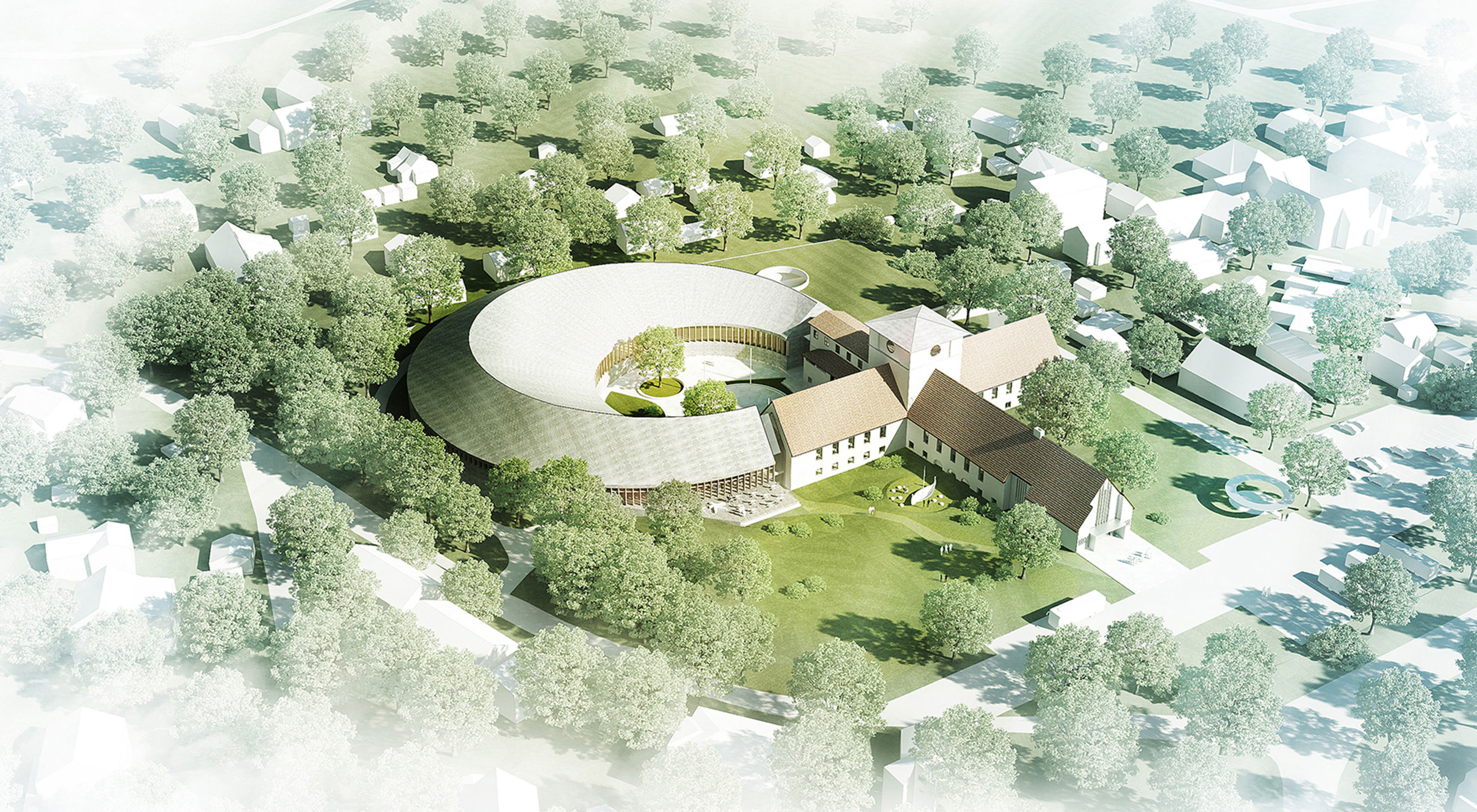New viking ship museum - geotechnics and vibration analyses
A new, modern Viking Age museum will be built onto the existing Viking Ship building at Bygdøy in Oslo. The irreplaceable collections make it necessary to severely limit vibrations throughout the construction period, from the start of construction until the Viking treasures have been moved into the new building. NGI is the geotechnical consultant for this work.

Construction and protection project
Many of the unique treasures from the Oseberg discovery and the other ship burial sites are so fragile that they could be destroyed by vibrations from construction work close to and adjacent to the existing museum. The new museum will be built with the Viking ships and objects still in place. It is therefore very important that vibrations do not arise when the building pit is excavated and secured - and when the new museum foundations are laid.

Sketch / section of the new museum, upper (left) and lower level (right).
A construction project and a protection project must therefore be carried out in simultaneously. The developer, Statsbygg, has hired Hjellnes Consult to lead the construction project and Brekke & Strand Acoustics to lead the protection project. NGI is responsible for geotechnology and engineering geology in the design of the construction project. In the protection group, NGI contributes with vibration analyses and assessments of vibration propagation in the ground.
All parts of the project must meet a set of criteria that are more extensive and complex than in a regular construction project. Most important is to minimize the risk to the ships and the fragile exhibits in the collections, ensuring a secure foundation for future generations.
The ground conditions under the Viking Ship building and the surrounding area consists mainly of marine clay deposits from the last ice age, and the depth to bedrock varies from 0 to 30 meters.
Gentle excavation and bracing
In the earliest phases of the project, NGI has assisted in assessing various solutions for the excavation pits and foundation design for the new museum building.
Furthermore, NGI's experts have made analyses of resulting vibrations from different types of construction activity. NGI's extensive database of measured vibrations in previous construction projects is used for preliminary assessments of the need for gentle construction methods. These methods are examined with the aim of staying well within the tolerance values for vibrations.
NGI is also working on assessing the need for lime-cement stabilization of the soft clay surrounding the existing museum, as well as the ground under future construction roads. Such stabilization has been successfully carried out elsewhere where roads and construction traffic are placed on top of quick clay deposits. In addition, solutions for pile foundations will be considered.
The new building will be shaped like an arch or loop, as viewed from the air, and will be connected to the west gable and facade to the north so that existing and new buildings will form a single unit. Construction is scheduled for the first half of 2020, and a grand opening in 2023.
======================
FACTS - New Viking Age Museum
The Viking Age Museum at Bygdøy is part of the Museum of Cultural History at the University of Oslo. The museum contains the burial finds from Tune, Gokstad, Oseberg and Borre. Cultural History Museum buildings in the centre of Oslo and at Bygdøy no longer meet the museum area requirements and therefore upgrading and expansion of the buildings is required.
The new facility will be three times larger than the existing museum at Bygdøy. The Viking Ship building (the building's exterior and the area around the building) is preserved as part of Bygdøy's cultural history.
The present museum complex was designed by the famous Norwegian architect Arnstein Arneberg in 1913 and erected in the period 1917-56. It was designed for 40,000 visitors annually. The number of annual visitors is now approximately 500 000.
AART Architects won Statsbygg's open planning and design competition for the New Viking Age Museum, with the proposal "Naust". The headquarters of AART Architects is in Aarhus, Denmark.
Sketch proposals for the museum extension project were completed on 1 February 2017. Construction is scheduled for the first half of 2020, with a grand opening in 2023..
See Statsbygg's description of the pre-project (Norwegian text only).

